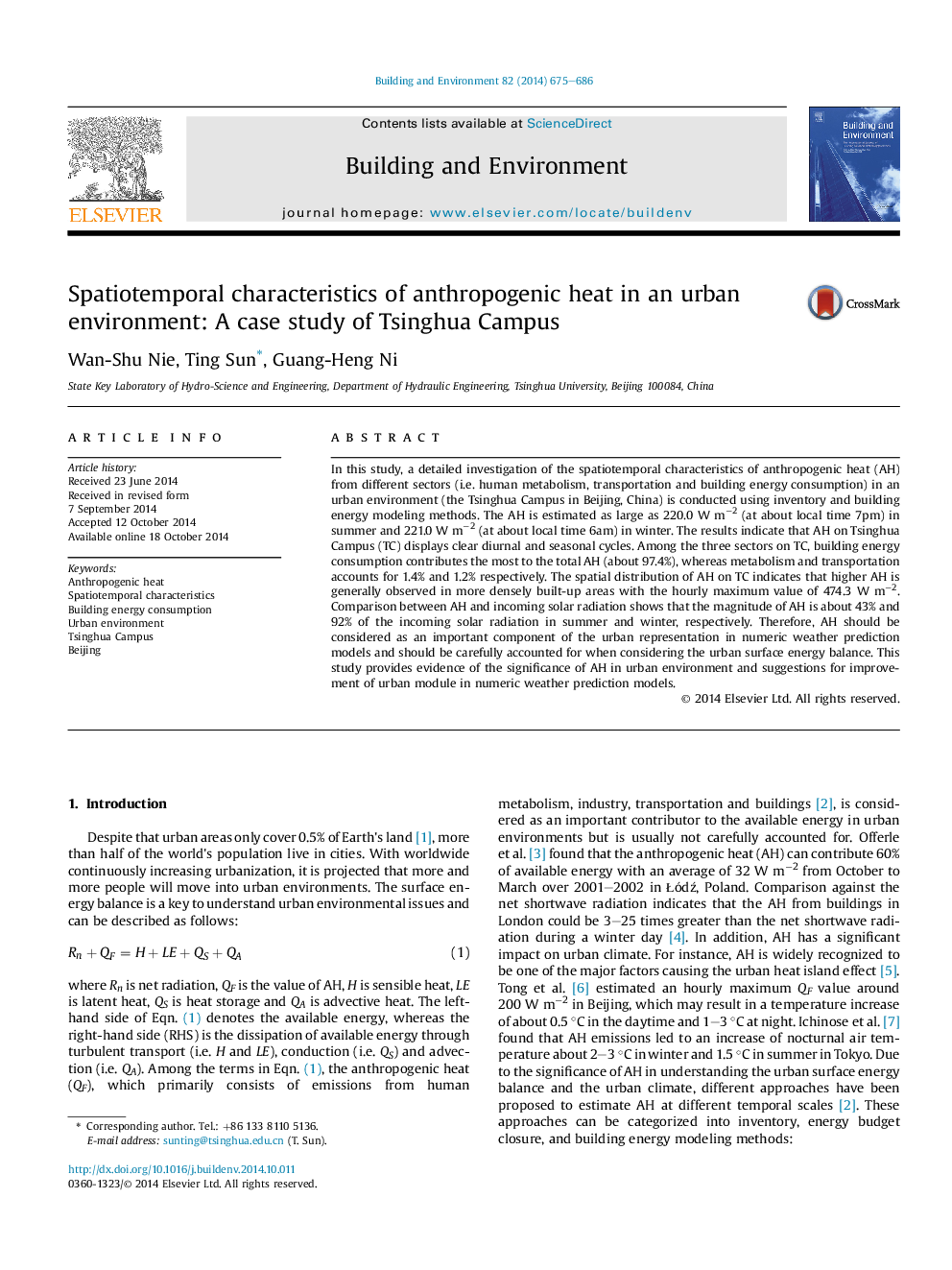| Article ID | Journal | Published Year | Pages | File Type |
|---|---|---|---|---|
| 6700443 | Building and Environment | 2014 | 12 Pages |
Abstract
In this study, a detailed investigation of the spatiotemporal characteristics of anthropogenic heat (AH) from different sectors (i.e. human metabolism, transportation and building energy consumption) in an urban environment (the Tsinghua Campus in Beijing, China) is conducted using inventory and building energy modeling methods. The AH is estimated as large as 220.0Â WÂ mâ2 (at about local time 7pm) in summer and 221.0Â WÂ mâ2 (at about local time 6am) in winter. The results indicate that AH on Tsinghua Campus (TC) displays clear diurnal and seasonal cycles. Among the three sectors on TC, building energy consumption contributes the most to the total AH (about 97.4%), whereas metabolism and transportation accounts for 1.4% and 1.2% respectively. The spatial distribution of AH on TC indicates that higher AH is generally observed in more densely built-up areas with the hourly maximum value of 474.3Â WÂ mâ2. Comparison between AH and incoming solar radiation shows that the magnitude of AH is about 43% and 92% of the incoming solar radiation in summer and winter, respectively. Therefore, AH should be considered as an important component of the urban representation in numeric weather prediction models and should be carefully accounted for when considering the urban surface energy balance. This study provides evidence of the significance of AH in urban environment and suggestions for improvement of urban module in numeric weather prediction models.
Keywords
Related Topics
Physical Sciences and Engineering
Energy
Renewable Energy, Sustainability and the Environment
Authors
Wan-Shu Nie, Ting Sun, Guang-Heng Ni,
